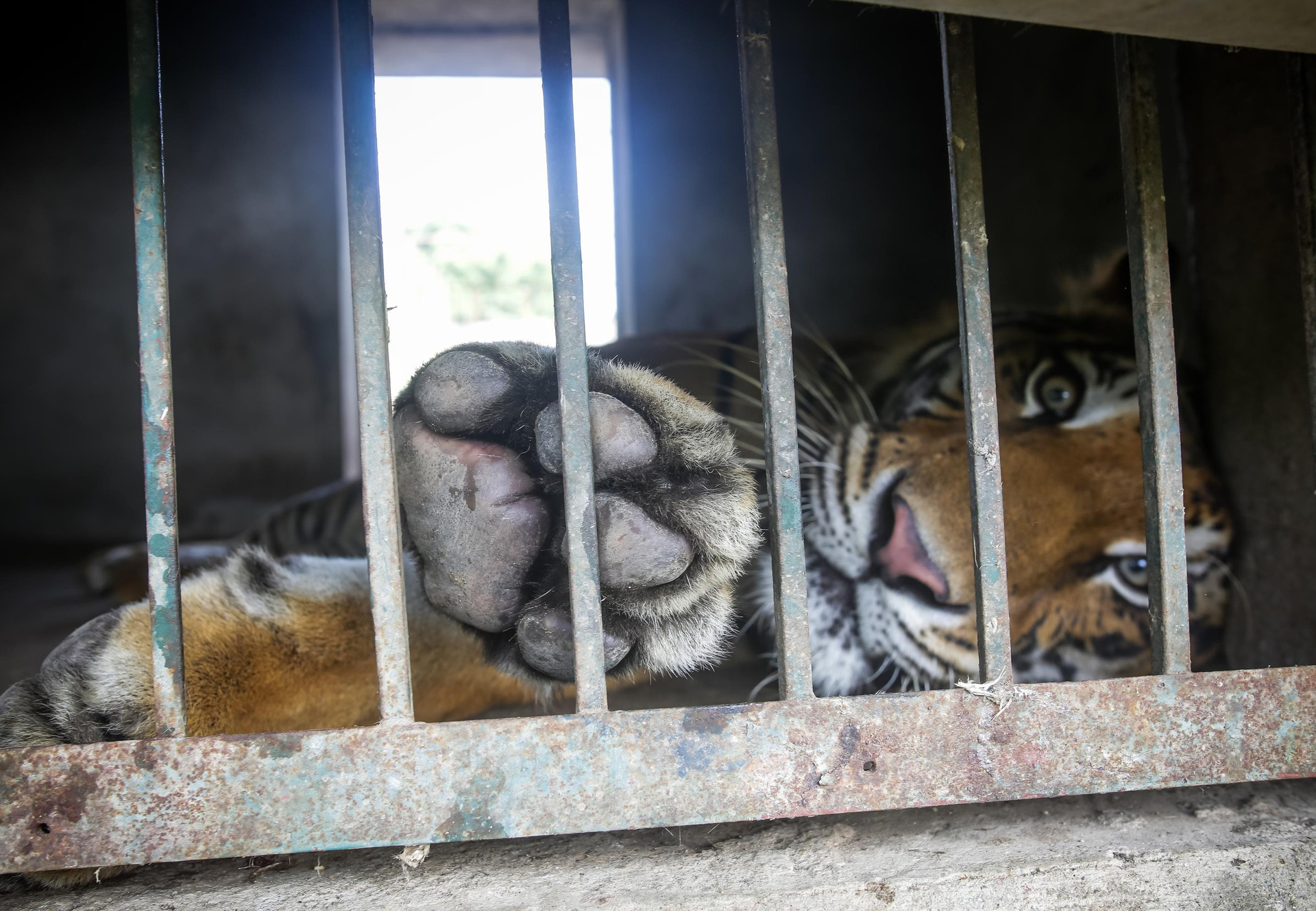
Big Cat Trade: The Thin Line Between Legal and Illegal Trade
Blog by Ruxandra Cracea, Wildlife Trade Campaigner, FOUR PAWS
When I joined the FOUR PAWS team as a Campaigner in the Wild Animals Trade Unit, I was aware tigers are on the brink of extinction, but I didn’t quite understand how we got here and exactly how the trade industry worked. And most importantly, what is the difference between legal and illegal trade? And how does this affect tigers, lions or other big cats?
Legal trade means that the sale of live animals or their body parts is allowed by both national and international legislation. Illegal trade is of course where the trade of the live animal or parts is not allowed for specific reasons, either by national or international legislation. However, it's a thin line between the two, which can be manipulated by the illegal trade to further exploit certain species. The trade of plants and animals is regulated at international level by CITES (the Convention on International Trade in Endangered Species of Wild Fauna and Flora), an international agreement between world governments. CITES defines trade rules and it can allow or ban international trade for a certain species around the world.
With big cats valuable alive and even more so dead, a worldwide multi-million-dollar industry (similar to what you’ve maybe seen in Netflix’s Tiger King) has been created, where traders have turned big cats into a commodity, removing them from their natural lives and ecosystems. The commercial trade of big cats is legal in most parts of the world, including Europe, South Africa, the US and Asia. That means the laws allow for live big cats to be bred in captivity, used for interactions, kept as pets and exported to Asian countries, where there is a big demand for them and their parts. Tigers for example, a non-native species to both Europe and Asia, are intensively bred in both countries. Because of the lack of regulation and enforcement, a vicious cycle has been created to profit off the animals. Although this cycle is different across the world, there are common threads of abuse. The female big cats are usually forced to have more than the two litters of cubs that they would naturally have in the wild. The cubs are then separated from the mother to be exposed to people and exploited for photos or other types of interactions. Once the cubs get too big, the adults are sometimes sent to be used in circus shows, killed for parts, or exported to Asia, where there is and has been a centuries-old demand for Traditional Asian Medicine. Behind the scenes of this industry, is very poor animal welfare, often abuse, a general lack of care and a big drive for commercial profit.

The legal trade of the live big cats fuels the illegal trade, and the line that divides the world of big cat breeders and those involved in criminal activities is often blurred. Each pound of a tiger corpse can generate a small fortune. With breeding facilities constantly having cubs, what happens to those that get old or die? In the case of the 10 circus tigers travelling from Rome to Russia, they were most probably destined to be killed and exported. The destination was a supposed zoo, but upon further research, authorities realised the zoo in question did not exist. With a booming legal industry, it’s hard to keep track of what happens to the animals alive, or dead – something traders have always exploited.
At FOUR PAWS, we strongly advocate for the protection of all big cat species in the wild. The best way to achieve change is by changing legislation in key areas of the world. And ensuring that important existing commitments, such as CITES Decisions, are implemented effectively. We work to ban the commercial trade of big cat species and their parts from Europe and South Africa. If the breeding and commercial trade is no longer allowed, it will effectively prohibit traders from breeding big cats, halt facilities legally offering interactions, prevent the private keeping of big cats as pets, and stop them from being exported to Asia. This will also have a knock-on effect on the illegal trade with their parts.
This November, FOUR PAWS will be at the biggest wildlife trade conference in the world, CITES CoP19. We’ll fight to bring awareness of the extent of the big cat trade industry in Europe and South Africa and call for better protection for all big cat species. If you want to read more about what the FOUR PAWS asks, read our recommendations here.


